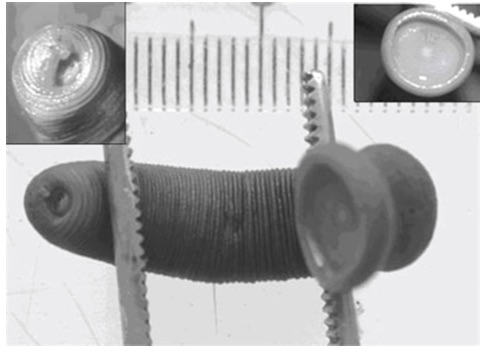From here.
Rabbi Elazar ben Perata was in trouble. When the Romans heard him being called him by the title "Rabbi" they arrested him.Teaching Torah was banned, and to be identified as a Rabbi, a teacher of Torah, invoked the death penalty. To save his life, Rabbi Elazar denied the charge. Instead, he claimed, he was simply a teacher (rabban) of weavers. So the Roman authorities tested him on his knowledge of weaving:
עבודה זרה יז, ב
אייתו ליה תרי קיבורי אמרו ליה הי דשתיא והי דערבא איתרחיש ליה ניסא אתיא זיבוריתא אותיבא על דשתיא ואתאי זיבורא ויתיב על דערבא אמר להו האי דשתיא והאי דערבא
They brought him two coils of wool and said to him: Which is the warp, and which is the woof? A miracle occurred, as a female bee came and sat on the warp, and a male bee came and sat on the woof. Rabbi Elazar ben Perata said to them: This is the warp, and that is woof.
Rabbi Elazar understood the message the two bees were sending. The male was sitting on the woof, which is threaded into the warp. The female bee was on the warp, which is fixed in the loom and receives the woof.
What is going on here? Is it in fact the case that male and female bees are distinguishable? It turns out that they are. Sort of.
Queens, Drones, and Workers
A hive contains three kinds of bees. First, there are thousands of worker bees. These are the ones that you see flying around collecting nectar from flowers, or annoying you in the Sukkah. All worker bees are female. The hive also has one Queen, whose sole task is to lay eggs. Obviously, the queen is female. She stays in the hive and is attended to by special worker bees who become nurse bees. And then there are the male drone bees, whose only job is to mate with a virgin queen. They leave the hive and fly to drone congregation areas, where, in midair, they mate (or attempt to mate) with a virgin queen. Then they fall to the ground and die.
The male drones are about twice the size of the female worker bees. According to a helpful article (Differences in drone and worker physiology in honeybees) published in 2005, the weight of an emerging worker is 70-100mg. In contrast, the weight of an emerging drone is around 260mg - over two-and-a-half times heavier. Drones also have bigger eyes and rounded, more stocky bodies.
“Drone bees are the hapless males within a colony. They seemingly have little or no purpose within the colony: they take no part in hive building or maintenance; they don’t defend the colony (drones do not possess a sting); they don’t gather food or nurture the larvae.”
A typical hive contains one queen, about 60,000 worker bees, and a few hundred drones. You are likely to have seen hundreds of worker bees over the years. You are, however, far less likely to have seen a drone. In fact, you may never have seen one. But they are out there.
Rashi vs. Tosafot
According to Rashi, Rabbi Elazar was able to distinguish between a smaller female worker (זיבוריתא) and a larger male drone (זיבורא). The worker sat on the warp, and the drone sat on the woof. Since the woof is inserted into the warp, Rav Elazar deduced that the woof was indicated by the male drone. Because there is indeed a difference in size and gross morphology between the workers and the drones, it is entirely possible that Rav Elazar could identify each. Assuming that he had great eyesight and was an experienced apiarist.
Drone Bee Phallus. From here.
Tosafot disagrees. There is no way, claims Tosafot, that Rabbi Elazar's eyesight was that good. Now not knowing anything about bees, you might agree. After all, the penis of a drone bee is very, very small. But as we have seen, to determine the gender of a bee you don't have to get that close. You just have know what you're looking for in terms of the body size and morphology.
Tosafot therefore suggests that the Talmudic words זיבוריתא and זיבורא do not refer to a female and a male of the same species. Instead, the words refer to two different species, which Rabbi Elazar could identify from a distance. The species זיבוריתא, written in a female form, was sitting on the warp. The species זיבורא, written in a male form, was sitting on the woof, since the woof goes into the warp.
There are thousands of species of bees and their larger cousins, the hornets. It is entirely possible that Rabbi Elazar noted that the two insects on the loom were two different species called by two similar but distinct names. Tosafot is incorrect to claim that the gender of a bee cannot be determined from a distance. But the alternative theory is also scientifically plausible.
We have already learned that honey has some amazing medicinal properties. Today we learn that bees too, can save a life. So next time you are bothered by bees, act kindly. After all, they saved Rabbi Elazar's life.
NEXT TIME ON TALMUDOLOGY: MATERNAL IMPRINTING
















